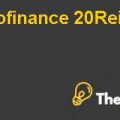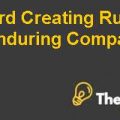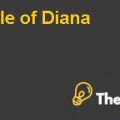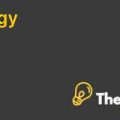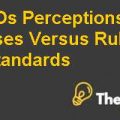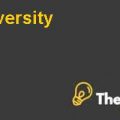
Introduction and Problem:
Carlyle Group is a private equity firm that is co-founded by Daniel, Bill and David, all of whom are technocrats of their respective fields. The company is headquartered in Washington DC and named after the Carlyle Hotel in New York. The inception of the firm begins with an idea for providing private equity finance however; it grows into a well-diversified investment firm with a passage of time. Daniel is the Chairman with the responsibility for conducting day to day operations, while Bill who has previously served as a CFO of MCI, has the authority to approve or disapprove any sort of investment. In addition to that, David has an experience in law firm and he has been working as a domestic policy advisor during the Carters Administration due to which he holds extensive contacts with some important people for fund-raising.
As Daniel holds an experience in working with a food and restaurant business, Marriot Corporation therefore, he directed the firm’s investment in these related-business segments however; the organization extends its investment to various industries such as defense, through its partnership with different industrial experts.
The organization is in the verge of increasing its acquisition and other investment, it needed to find a way to secure its permanent source of income, as it has a strong internal investors’ team with the determination to invest in different ventures as seem appropriate by the organization though; as there is a need for a permanent source, then there is no better source than the IPO itself, which would allow it to gain capital investment from the public in general.
The IPO is structured in a way to sell 10% stake, at a price range between $ 23 to $ 25 however; the price is conservative because there is still no interest shown from potential investors even after the promotion of the offer, hence it is wise to remain low in terms of pricing however; there are other issues, first there is no uncertainty about the treatment of shareholders and it is also mentioned in the initial filing about the unfriendly shareholder governance structure, which is inherent in the organization. Moreover, there is an uncertainty about the way according to which assets of the firm are valued ,although the management and performance fees are two of the most important source of incomes however; performance management fees is uncertain, thus the valuation process is complicated. Finally, there is a difficulty in valuing the carried interest that could be earned from future investment exits.
In addition to that, there is an issue which further aggravate the future prospect of the PE firms for investors, as it is reported that various PE firms has undergone the IPO process such as KKR, Apollo Global Management, Blackstone Group, etc. All of these firms have not been able to increase the Price above the IPO Price, after the IPO Process except for KKR, which shows that IPO has not been typically favorable for the PE Firm, so taking account of all these factors, there is a need to determine whether this IPO Process is favorable for the organization?
Analysis:
In order to reach the decision, there is a need to perform qualitative along with the quantitative analysis in reaching the conclusion.
Sources of Income:
There are three sources of income for the organization, which is as follows:
- Revenue from management fees, which is based on Asset Under management (AUM), Transaction and advisory fee.
- Revenue is also generated from performance fees, which is based on residual allocation of profit or carried interest from Carry and Hedge funds.
- Finally, the revenue is also earned from investment income, which is the amount of capital invested in its own fund.
The role that each of these plays in PE firm is as follows:
- The management fees is charged as the company’s management is responsible for managing all assets in which limited partners amount has been invested including all the transaction cost associated with different deals. Moreover, the advisory fee is the charge made for advising shareholder on investing in different types of investment including the type of asset investment, any diversification in asset portfolio and how to reduce risk by investing in negatively correlated securities.
- Performance fees is based on managing the security till its exiting phase, where the liquidation of investment gives rise to a cash receipt, out of which a certain proportion of fees is earned by the company.
- The investment income including any dividend or interest received from investing in any security.
The strength of an organization is as follows:
First the organization has invested in diversified ranges of securities in the market due to which it is well-positioned to earn higher returns as shown by the diagram below:.........
This is just a sample partial case solution. Please place the order on the website to order your own originally done case solution.
The solution will also come with a separate excel file with calculations.


